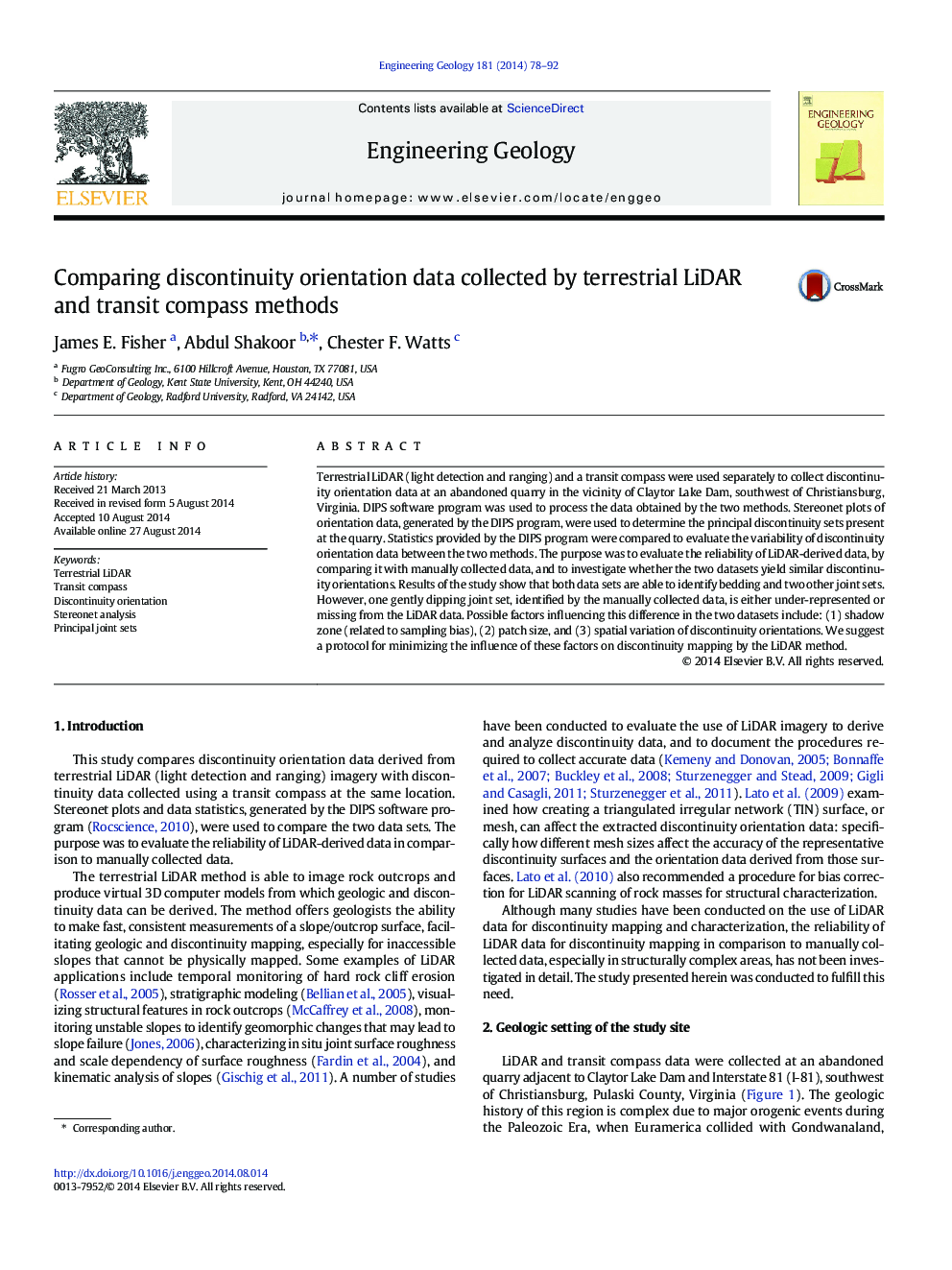| Article ID | Journal | Published Year | Pages | File Type |
|---|---|---|---|---|
| 4743509 | Engineering Geology | 2014 | 15 Pages |
Terrestrial LiDAR (light detection and ranging) and a transit compass were used separately to collect discontinuity orientation data at an abandoned quarry in the vicinity of Claytor Lake Dam, southwest of Christiansburg, Virginia. DIPS software program was used to process the data obtained by the two methods. Stereonet plots of orientation data, generated by the DIPS program, were used to determine the principal discontinuity sets present at the quarry. Statistics provided by the DIPS program were compared to evaluate the variability of discontinuity orientation data between the two methods. The purpose was to evaluate the reliability of LiDAR-derived data, by comparing it with manually collected data, and to investigate whether the two datasets yield similar discontinuity orientations. Results of the study show that both data sets are able to identify bedding and two other joint sets. However, one gently dipping joint set, identified by the manually collected data, is either under-represented or missing from the LiDAR data. Possible factors influencing this difference in the two datasets include: (1) shadow zone (related to sampling bias), (2) patch size, and (3) spatial variation of discontinuity orientations. We suggest a protocol for minimizing the influence of these factors on discontinuity mapping by the LiDAR method.
